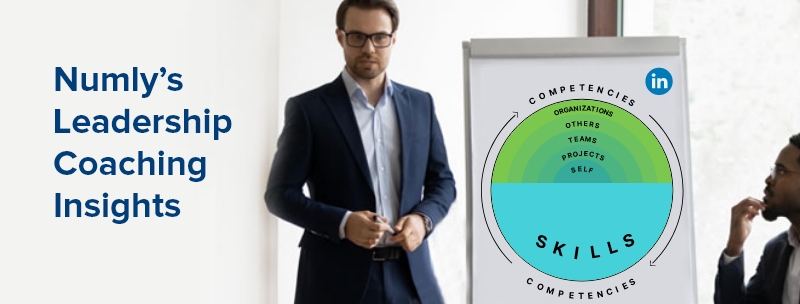Multiple motivators such as a multi−generational workforce, competitive talent market, remote workers, and global offices. are the new normal. It is now time to accept that the game of work has shifted. Money, while important, no longer remains a primary motivator for employees. What matters more to them is employee experience.
Employee experience is the sum of an employee’s perception of their interactions with their workplace. Much like customer experience, employee experience also borrows heavily from design thinking strategies to optimize the work environment. Employee experience is not about just one thing − it is about the culmination of multiple work-related experiences that have been gleaned over a period of time.
Since everyday experiences are never always the same, employee experience, too, is in a constant state of flux and needs to be managed with care.
The pillars of employee experience
What drives employee experience? While many might link great experiences with cosmetic benefits such as fancy office cafe’s or exotic annual holidays or parties, employee experience is about creating deep connections with the workforce, at an individual level to create a more human and positive organization. What are the pillars that help organizations achieve this?
Creating a purpose−driven environment
Employee experience initiatives have to focus on creating a purpose−driven environment where employees understand why and how their work matters. Today, millennials constitute a greater part of the employee demographics. This is a workforce that is inspired by purpose−driven businesses. Consequently, they want to know how they can be a part of the ‘bigger picture’ and how their work contributes to it.
Purpose−driven experiences take into account the growth and career needs of the workforce at an individual level. It helps employees see that the organization is invested in their growth story from the actions of the organization. It includes creating more opportunities at work, proactively identifying high−potential employees, providing all employees equal opportunities to hone their skills and expand their potential. Purpose−driven experiences help employees differentiate a ‘job’ from a ‘career’ as the experiences contribute to furthering their career graph.
Enabling achievement
Talent management practices have to evolve to create different experiences for the employees that help them feel a sense of accomplishment and achievement in the work they do. For this, organizations need to initiate a rich dialogue with their people to gain a better understanding of what they are capable of and what they are interested in.
In an age when the Darwinian concept of ‘survival of the fittest’ becomes a mainstay, employees want organizations to be invested in their efforts to help them succeed at work. This means helping employees identify their avenues of improvement on a proactive basis to help them remain relevant in the age of disruption. Whether it is by
upskilling and reskilling the workforce to improve their technical prowess, providing mentoring opportunities to improve growth prospects within the organization as well as at a personal level, or having a mechanism that acknowledges effort and achievement − steps are necessary to help raise the employee experience bar.
Establishing experience−based feedback systems
You can manage what you can measure. It is no different when it comes to building employee experience. One of the critical blocks of employee experience is a proactive two−way feedback system that evaluates the efficiency of the experience activities. As mentioned earlier, employee experience is related to people, and no two people are the same. It, therefore, becomes imperative to have the capability to measure the success or improvement areas of initiatives such as learning and development initiatives or mentoring programs, that feed into the experience matrix.
The annual employee engagement survey also needs to get a facelift. Instead of one giant survey that eventually leads to analysis paralysis, it becomes more valuable to collect smaller chunks of data on a more proactive basis. Asking targeted and specific questions to the employees and ensuring that the privacy of this data is never compromised builds employee trust. This leads them to be more open while answering questions to identify their success parameters and to assess their improvement spots. Proactive management of this feedback also helps enterprises design personalized engagement strategies, which consequently contribute to the employee experience.
Increasing the happiness index
Commitment comes from happiness, whether it is our personal relationships or our relationship with work. An unhappy employee will never be a loyal employee. Organizations know that only too well, and hence it comes as no surprise that increasing the happiness index forms a crucial pillar of employee experience.
While it is tempting to relate happiness with the superficial activities of an organization, happiness at work can be unleashed when an employee’s enablement is pushed close to work − with the right set of tools, technologies, and people. Giving employees an environment where people feel comfortable and safe talking about what is on their mind, what they need to do to improve, how they need help, drives trust. Providing unbiased information, feedback, and development advice help in developing stronger bonds at work. All these lead to positive work outcomes and, ultimately, help an employee understand her purpose in the organization, become self−motivated, and unlock the achievement.
Most successful organizations view employees as their most valuable assets. In an age when talent wars loom large, it only makes sense to focus on delivering elevated employee experiences. It helps in ensuring that the employees remain motivated and excited about their workplace and their work, have higher productivity levels, and ultimately contribute positively to the organization’s bottom line.
Contact us to leverages the power of AI to help medium and large organizations drive phenomenal engagement and productivity gains across all levels. Take a free trial today!

